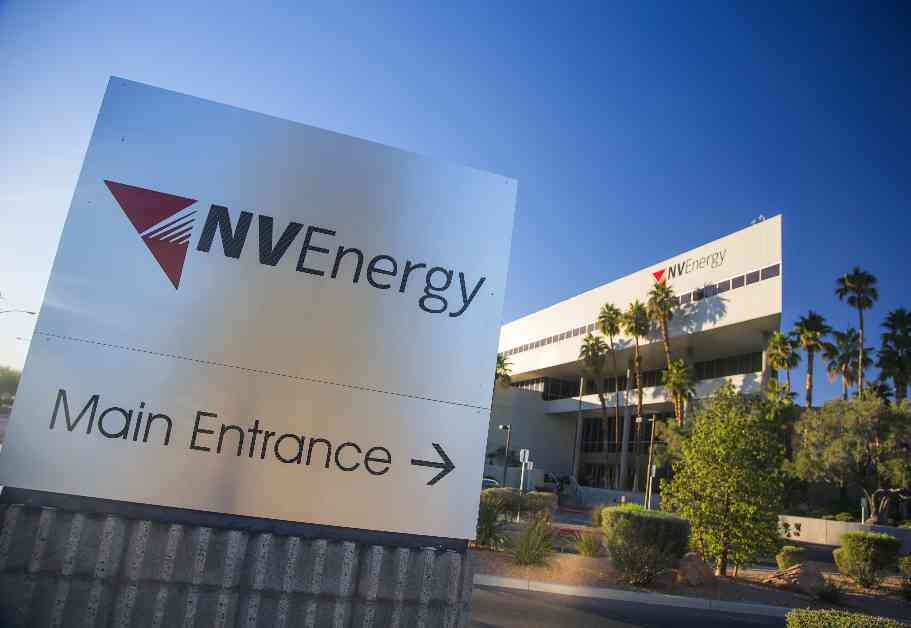NV Energy’s Greenlink West project, a massive transmission line set to run between Las Vegas and Reno, recently received federal approval from the Department of Interior. This significant milestone marks a crucial step forward in enhancing Nevada’s transmission capacity and facilitating the transmission of clean energy across the state.
The 350-mile transmission line, which is expected to be operational by May 2027, will stretch from Las Vegas to Yerington, transmitting up to 4,000 megawatts of clean energy. This capacity is estimated to power approximately 4.8 million homes, underscoring the project’s substantial impact on Nevada’s energy landscape.
The approval of Greenlink West comes alongside the advancement of a companion project, Greenlink North, in Northern Nevada. The 210-mile transmission line will create a utility corridor spanning Highway 50, connecting White Pine, Eureka, Lander, Churchill, and Lyon counties. Both projects, when combined with the existing One Nevada Transmission Line, will establish a continuous triangle loop of high-voltage transmission lines throughout the state, improving service and reliability for customers.
Doug Cannon, NV Energy’s president and CEO, emphasized the significance of these projects in a press release, stating that Greenlink West strengthens the state’s transmission system and provides greater access to Nevada’s renewable energy zones. This development aligns with Nevada’s goals of de-carbonization and transitioning towards a future powered by 100% renewable energy, contributing to the reduction of the state’s carbon footprint.
Despite the positive implications of these projects, their combined cost has nearly doubled since their initial proposal in 2019. Originally estimated at $2.5 billion, the price tag has now escalated to $4.24 billion. However, NV Energy projects that the economic activity generated by the Greenlink projects will reach $690 million and create 4,000 jobs, highlighting the potential benefits for the state’s economy.
The funding for these projects will be shared between NV Energy’s wholesale transmission customers and customers statewide, with Southern Nevada shouldering approximately 70% of the costs and Northern Nevada covering the remaining 30%. The recovery of project costs is expected to span over 70 years, indicating a long-term investment in Nevada’s energy infrastructure.
While the Greenlink projects offer promising advancements in Nevada’s energy sector, they have also raised concerns among environmental and citizen groups. The routing of the Greenlink North transmission line through the Tule Fossil Springs National Monument and sage-grouse habitat management areas has sparked criticism and calls for reconsideration.
Environmental organizations have urged the Bureau of Land Management (BLM) to reassess the alignment of the Greenlink North project to minimize impacts on wildlife habitats. Concerns have been raised about the potential disruption to greater sage-grouse populations, as the project’s current trajectory could encroach upon crucial mating grounds and habitat areas.
The BLM’s ongoing efforts to update its greater sage-grouse conservation and management plan underscore the importance of balancing energy development with wildlife conservation. With the agency managing significant sage-grouse habitat across the country, the impact of development, climate change, and wildfires on these populations necessitates careful consideration in project planning.
To address concerns about the project’s impact on greater sage-grouse, the BLM has mandated that NV Energy install anti-perching deterrents on transmission poles to mitigate predation by ravens. These mitigation measures aim to minimize the potential harm to sage-grouse populations and safeguard their habitats amidst ongoing development activities.
As the BLM prepares to finalize the environmental impact statement for the Greenlink North project in March, the decision-making process will involve weighing the project’s benefits against its environmental implications. The outcome of this assessment, expected in July, will determine the project’s timeline for completion and integration into Nevada’s energy infrastructure.
In parallel with the Greenlink projects, the Department of Interior has advanced two additional renewable-energy projects in Nevada. The Libra Solar Project in Lyon and Mineral counties, capable of generating and storing up to 700 megawatts of energy, represents a significant addition to Nevada’s renewable energy portfolio.
Furthermore, the Bonanza Solar Project in Clark and Nye counties, with a proposed capacity of 300 megawatts and battery storage, underscores the state’s commitment to expanding its renewable energy capacity. These projects align with President Joe Biden’s goal of permitting 25 gigawatts of renewable energy on public lands by 2025, contributing to the administration’s broader efforts to transition towards clean energy sources.
The federal government’s approval of 41 renewable-energy projects on public lands since President Biden took office reflects a concerted push towards sustainable energy development. With an additional 55 utility-scale renewable-energy project proposals under review across the Western U.S., the momentum towards renewable energy expansion continues to grow.
The upcoming months will be crucial for Nevada’s energy landscape as the Greenlink projects progress towards construction and operation. The balance between advancing renewable energy infrastructure and protecting wildlife habitats will remain a key consideration in the development of these projects, underscoring the importance of sustainable energy planning and environmental stewardship.

